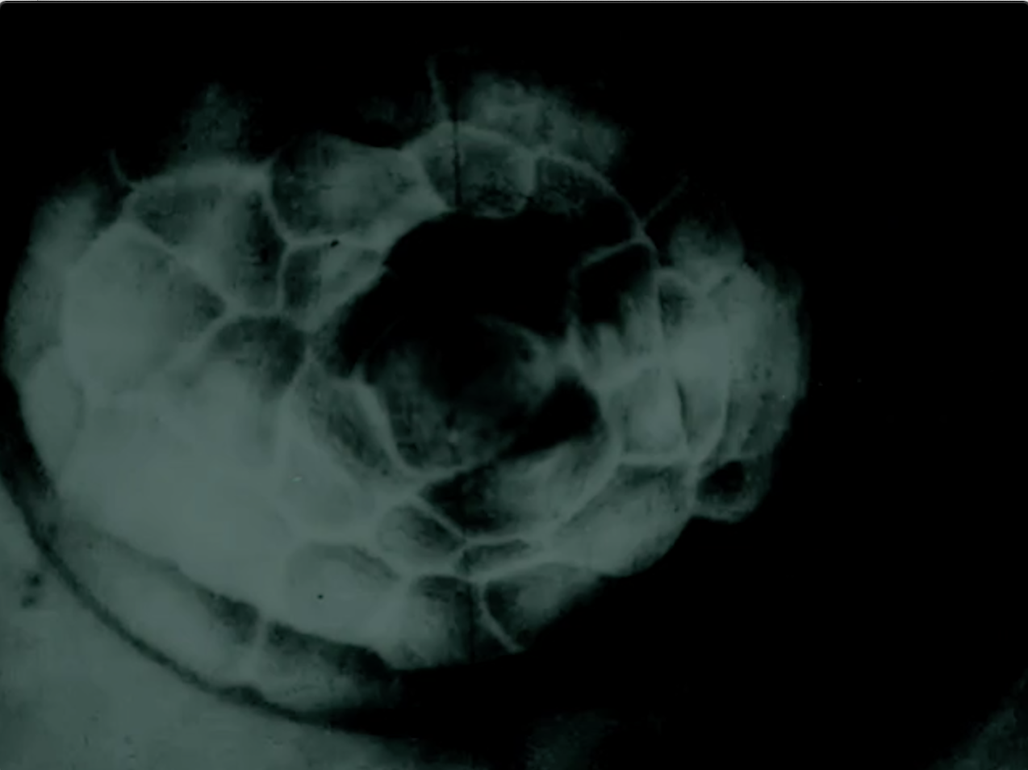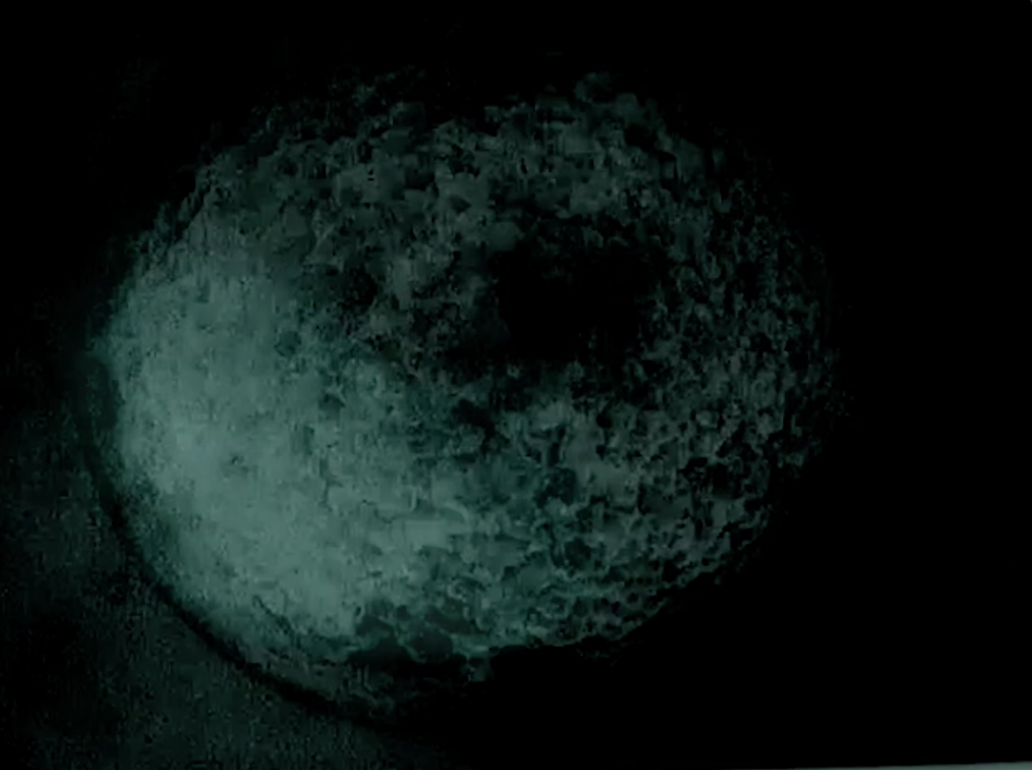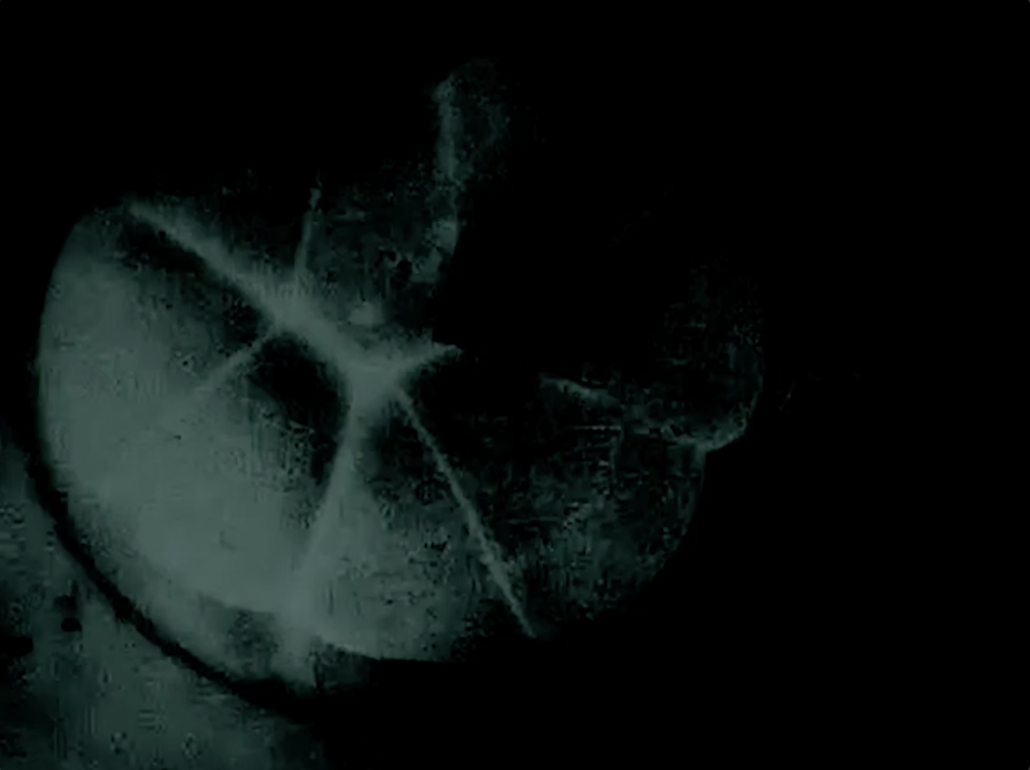occhiolino
Excessive microscopic seeing. That might be the main idea behind the images in occhiolino, Michaela Grill’s and Sophie Trudeau’s finale to their five-part found footage series. Or rather, behind the appropriated material from a 1920s scientific film that has been condensed here to an enchanting audio-visual weave. One believes that what they’re becoming aware of from out of the darkness is a huge eye, while a harmonious-minimalist pulsating synth sound provides the beat. What seems to be a blinking eye is, though, in fact, massively enlarged views of a cell dividing, which nonetheless does not at all dampen the magic of the “entoptic” phenomenon produced here. The pseudo-pupil presents itself—in the figurative sense—as a makeshift vessel for all kinds of cellular, even molecular structures whose transience is held together at the sound level by well-tempered string chords. A comb-like web briefly begins to solidify but is immediately torn away again by rapid staccato fire. The process intensifies further, whereby joining the illusion of it steadily becoming larger is a simultaneous semblance of increasingly deeper penetration into the matter. Horizontal image splitting and subsequent re-calibration underscore the inner dynamics of this visual profundity—of the submersion in the dissecting gaze. And in the final third, as a bewitching beat begins to draw everything under its spell and successively decelerate it musically, we see the bravely throbbing mass that is billowing within itself, gradually calm down. A supposed “little eye” (occhiolino), although the micro-optics depicted therein quite large—and in Grill’s und Trudeau’s treatment, equipped with immense allure whose force our own vision has great difficulty evading. (Christian Höller)
Translation: Lisa Rosenblatt
occhiolino
2022
Austria, Canada
11 min



